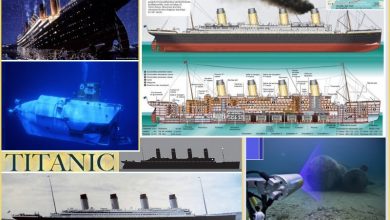
The world can be divided into 7 continents and 5 oceans. The continents are Africa (with 54 countries, the hottest continent and home to the Sahara desert [the world’s largest desert] occupying a quarter of this continent), Asia (with 50 countries, the most populated continent), Antarctica (is covered with ice and has no permanent population [except for scientists that maintain research stations]), Australia (with 14 countries is the least populated country [except for Antarctica]), Europe (with 51 countries [the European Union is the largest global economical and political union]), North America (with 23 countries [the largest economy in the world]), and South America (with 12 countries [the largest forest, the Amazon rainforest, covers 30 per cent of the total area of this continent]). The oceans are the Arctic-, Atlantic-, Indian-, Pacific-, and Southern Ocean. A huge problem for geographers was to define the borders between continents.
Europe is a unique continent with 51 independent states; it is not totally surrounded by water and has a land border with Asia. Azerbaijan, Georgia, Kazakhstan, Russia, and Turkey are countries that are located in Europe as well as Asia, and known as transcontinental countries. Armenia and Cyprus are politically known as European countries, although they are geographically located in West Asia. The biggest country of Europe is Russia, and the smallest is Vatican City (with only a small territory in the middle of Rome). The latest list of countries in Europe in alphabetical order is Albania, Andorra, Armenia, Austria, Azerbaijan, Belarus, Belgium, Bosnia and Herzegovina, Bulgaria, Croatia, Cyprus, Czechia, Denmark, Estonia, Finland, France, Georgia, Germany, Greece, Hungary, Iceland, Ireland, Italy, Kazakhstan, Kosovo, Latvia, Liechtenstein, Lithuania, Luxembourg, Malta, Moldova, Monaco, Montenegro, the Netherlands, North Macedonia (formerly Macedonia), Norway, Poland, Portugal, Romania, Russia, San Marino, Serbia, Slovakia, Slovenia, Spain, Sweden, Switzerland, Turkey, Ukraine, United Kingdom (UK), and Vatican City.
In order to create a smart city, the managers of smart cities must bear 2 things in mind; a city must have a long term goal and involve the citizens as part of that plan. Europe leads the top ten ranking with seven cities that scored more for quality of life and sustainability than other top cities. Looking at the top 50 positions, Europe is still dominant with 28 cities; North America has 13, Asia 5 and Oceania 4. North American cities are famous for their capital and economy, while European cities are known for their public management schemes, mobility, and social diversity. The perfect city does not exist! According to the 6th edition of the annual IESE Cities in Motion Index 2019 (prepared by IESE Business School’s Center for Globalisation and Strategy), London is the smartest city in the world. The index looks at the level of development of 174 cities from 80 countries. The cities are reviewed according to 9 sustainabilities of city life – social diversity (agreement between the different social groups), economy, environment, governance, human capital (to attract, develop, and nurture talent), international outreach, transportation (mobility and access to public services), technology, and urban planning. A smart city needs to do well in more than one division to be economically, environmentally, and socially sustainable. The group of global cities that qualify in the top ten are (in the order of their ranking) London, New York, Amsterdam, Paris, Reykjavik, Tokyo, Singapore, Copenhagen, Berlin, and Vienna. All, except New York, Tokyo, and Singapore are in the European continent!
London – The United Kingdom is a state that consists of 4 countries England, Scotland, Wales and Northern Ireland. London (the capital of England) topped the chart, because of its excellence in most areas analysed by the index. Due to its many quality business schools and universities, it ranked best for human capital as well as international outreach. Its worst performance was in the social diversity division. London has an open data platform (London Datastore) which is used by numerous companies, developers, and researchers. It has installed the Heathrow capsules to serve as transport for Heathrow Airport (one of the busiest airports in the world). London is also busy with one of Europe’s largest construction projects, known as the Crossrail project, which will extend metro lines to the city; London already has 30 existing stations.
New York – is the 27th biggest state in the United States, sharing a border with Canada. New York or ‘The Big Apple’ is the world’s most important economic center. It did best in economy, and divisions such as urban planning, human capital, transportation, international outreach, and technology respectively. New York has an affluent economical climate, has many integrated technological firms and is known for its free Wi-Fi service LinkNYC. Its social diversity division placed low in the index.
Amsterdam – The Kingdom of the Netherlands consists of 4 countries namely the Netherlands, Aruba, Curaçao, and Sint Maarten. Although ‘Holland’ refers to the 2 provinces North-Holland and South-Holland, the term is used to refer to all of the Netherlands. Amsterdam is in the province North Holland, Western Netherlands. The Netherlands was one of the founding members of the European Union. Overall, Amsterdam performed well in many divisions – economy, international outreach, technology, social diversity, transportation, and urban planning. Amsterdam has an advanced ‘shared bicycle’ system for public use and has initiated a project to ban gasoline cars (including diesel cars) by the year 2025. Most households have bicycles! Amsterdam wants to become Europe’s first ‘zero-emissions’ city.
Paris – is the capital of France. The Eiffel Tower is a known landmark of Paris. Paris (and London) is an important financial hub. Paris did well in international outreach, transportation, human capital, the economy, and technology respectively. The city promotes clean transport by using bicycles and electric cars. Through the Internet of Things (IoT), the residents of Paris have access to city data to control the flow of people and vehicles into ‘The City of Light’. The Grand Paris Express project (one of the largest improvements of a transport network in Europe), redesigned the transportation network in the metropolitan area of Paris. The project expands metro lines, interconnects stations, and adds an automatic metro system.
Reykjavik – the capital of Iceland (the European island and country below the Arctic Circle). Although Reykjavik is one of the tiniest cities of the index, it leads the environment division for the second year. The buildings are naturally green, because mostly all energy and electricity production stem from geothermal and hydroelectric energy. Reykjavik has put forward a climate action plan in which the city will have zero carbon emissions by 2040.
Tokyo, (Japan’s busy capital, will be the first Asian city to host the Olympic Games twice). Tokyo is one of the cities with the highest labour production. The city did well in the following divisions: economy, environment, and human capital. Tokyo placed in the top 50 smart cities list for urban planning, transportation, and technology.
Singapore – the Republic of Singapore is a sovereign island in Asia. In Singapore, everything revolves around technology; it ranked the best city for technology and did well in international outreach. Singapore has automatic taxis (with no drivers), robotic hospitals (with robots as well as humans), vertical gardens (to collect rainwater and regulate the temperature), and a huge fiber-optic network (almost as long and as wide as the island).
Copenhagen – is connected to Sweden by a bridge and is the capital and largest city of the Kingdom of Denmark (located on the islands Zealand and Amager). Due to Copenhagen’s commitment to ‘zero carbon emissions’ by 2025, it ranked 3rd in the world in the environmental division. It did well in technology, social diversity, governance, international outreach, transportation, and economy respectively.
Berlin – is the capital of Germany and also the largest city in Germany). Berlin did well in human capital, international outreach, governance, and transportation. Although its worst divisions were environment and economy, it still ranked within the top 50.
Vienna – is the capital of Austria). It is the smallest in area but the largest in population. Vienna performed well in transportation and international outreach and placed within the top 50 for technology, environment, and human capital respectively.











